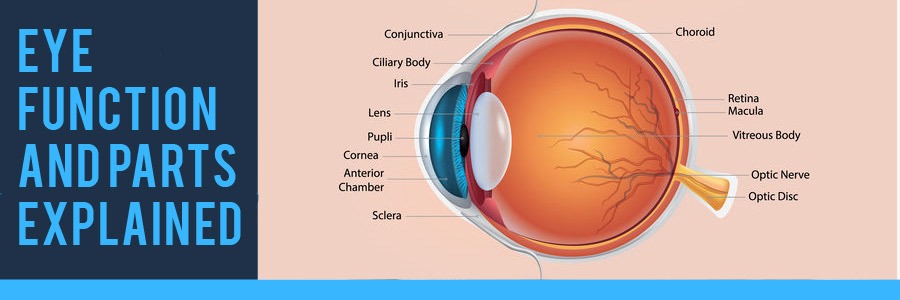
Personalized Eyewear Consultation by Appointment Only (215) 443-7706
- Home
- About
- Products
- Services
- Lens Lab
- Vision Care
- Newsletter
- Contact Us
Menu- Home
- About
- » Doug Wohl
- » Awards
- » Reviews
- Products
- » Bifocals
- » Computer Glasses
- » » Computer Vision Syndrome - Digital Eye Strain
- » Contact Lenses
- » » Are Contacts Right For You
- » » Guidelines for Contacts Wear and Care
- » » Instructions for Soft Contacts
- » Eyeglass Frames
- » » Frame Guide - Frame Shape and Face Shape
- » » Frame Materials
- » » Eyewear Maintenance
- » » Makeup Tips When Wearing Glasses
- » » Wiley X Eyewear Frames
- » Children Eyeglasses
- » » Eyewear for Babies and Young Children 0-5 Years Old
- » » Kids Corner
- » » 10 Tips for Buying Glasses for Children
- » Occupational Eyeglasses
- » Prescription Lenses
- » » Lens Coatings and Tints
- » » » Anti Reflective Coating
- » » Replacement Lens Options
- » Progressives
- » Readers
- » Safety Glasses
- » » Eye Injuries that Could be Prevented with Safety Glasses
- » » Prescription Safety Eye Glass Feature Guide
- » Single Vision Eyeglasses
- » Sports Eyewear
- » Sunglasses
- » » UV Eye Safety
- Services
- » Eye and Vision Exam
- » » Eye and Vision Problems
- » » Glaucoma Test
- » » Vision Refraction
- » Contact Lens Exam and Fitting
- » Eyeglass Repair
- Lens Lab
- Vision Care
- » Cornea
- » Detached Retina
- » Diabetic Retinopathy
- » Dry Eyes
- » Eye and Vision Conditions
- » Fun Eye Facts
- » Eye Function and Parts Explained
- » FAQ
- » Macular Degeneration
- » Makeup Causing Eye Damage
- » Medication Side Effects to Vision
- » Optic Nerve Damage
- » Optical Terms and Definitions
- » Red Eye
- » Retina Damage
- Newsletter
- » Blue Light Blocker Glasses
- » Buying Glasses Online
- » Covid-19 Safety Practices
- Contact Us
- Home Vision Care Eye Function and Parts Explained
Your eye is one of the most complex parts of your body. The parts of your eye allow your body to take in light and perceive objects around you in the proper color, detail and depth. This allows you to make more informed decisions about your environment. If a portion of your eye becomes damaged, you may not be able to see effectively, or you can lose your vision all together. What are the parts of your eye? Which part is not functioning properly when yousuffer different vision problems like myopia and glaucoma? Which part produces tears?
How You See and How to Keep Your Eye Functioning Properly
There are several physical and chemical elements that make up your eye. Your eye is linked together with the nervous system, which allows the brain to take in information from your eyes and make the appropriate decisions on how to act upon this information. The nerves must be kept in prime condition or your brain may start to receive false images, or you will not take in enough information to get an accurate perception of your environment.
Eye Parts Defined
Anterior Chamber: The space in the eye that is behind the cornea and in front of the iris.
Ciliary Body: A muscular ring under the surface of the eyeball; helps the eye focus by changing the len’s shape and also produces aqueous humor.
Cornea: Transparent front segment of the eye that covers iris, pupil, and anterior chamber, and provides most of an eye's optical power
Iris: Pigmented tissue lying behind cornea that (1) gives color to the eye, and (2) ontrols the amount of light that enters the eye by opening and closing the pupil; separates the anterior chamber from the posterior chamber.
Lens: The transparent structure inside the eye that focuses light rays onto the retina.
Optic Nerve: Nerve fibers in the retina merge to form the optic nerve, which leads to the brain. Nerve impulses are carried through the optic nerve to the brain.
Pupil: Variable-sized, circular opening in center of iris; it appears as a black circle and it regulates the amount of light that enters the eye.
Retina: Part of the eye that converts images into electrical impulses sent along the optic nerve for transmission back to the brain. Consists of many named layers that include rods and cones.
Ora Serrata is the serrated junction between the retina and ciliary body.
Vitreous: A clear, jelly-like substance that fills the middle of the eye. Also called the vitreous humor, "humor" in medicine referring to a fluid (or semifluid) substance....
Sclera: The white of the eye; a protective fibrous outer layer covers all of the eyeball except for the part covered by the cornea.
Rectus Medialis The ocular muscle whose contraction turns the eyeball medially
Central retinal vein (retinal vein) is a short vein that runs through the optic nerve, leaves the optic nerve 10 mm from the eyeball and drains blood from the capillaries of the retina into either superior ophthalmic vein or into the cavernous sinus directly. into the cavernous sinus.
Fluid fills most of the inside of the eye. The chambers in front of the lens (both the anterior and posterior chambers) are filled with a clear, watery fluid called aqueous humor. The large space behind the lens (the vitreous chamber) contains a thick, gel-like fluid called vitreous humor or vitreous gel. These two fluids press against the inside of the eyeball and help the eyeball keep its shape.
Light passes through the cornea and the pupil at the front of the eye and is focused by the lens onto the retina at the back of the eye. The cornea and lens bend light so it passes through the clear substance (vitreous gel) in the back chamber of the eye and is projected onto the retina. The retina converts light to electrical impulses. The optic nerve carries these electrical impulses to the brain, which converts them into the visual images that you see.
About Wohl Optics Vision Care
Proper eyewear prescription AND fit are vital for your best vision. Fit is something that you will never get right with an online optical business. Veteran owned and operated - best in Bucks County Optical eye care shop.
How could your vision be better? What situations do you feel give you trouble when wearing eyeglasses? That is why we are here.
Exclusive Discounts
Military, Veterans, First Responders, Police, Firefighters, Ambulance all receive exclusive discounts (not combined with insurance or other discounts).
We accept most major Vision Insurance Plans.
(215) 443-7706 Phone
(215) 443-8795 FaxWohl Optics
550 Street Rd.
Warminster, PA 18974Veteran Helping Veterans - Local Bucks County, PA Independent Optician

Copyright © 2016-2022
All Rights ReservedCredit Cards Accepted

Private Consultations for your Family: Flexible hours at your convenience by appointment ONLY
Wohl Optics Regular Schedule:
Monday 10:00AM - 5:00PM Tuesday 10:00AM - 4:00PM Wednesday 10:30AM - 6:00PM Thursday 10:30AM - 7:30PM Friday 10:00AM - 6:00PM Saturday 10:00AM - 1:00PM We are offering personal appointments to everyone for the selection of eyeglasses and eyeglass adjustments. We will make every effort to accommodate your schedule. Let us know if you would like to meet at Wohl Optics outside of the above regular scheduled hours.
Service Areas
Bucks County, PA; Montgomery County, PA; Chester County, PA; Philadelphia, PA; Warminster, PA; Ivyland, PA; Warrington, PA;Furlong, PA; Warrington, PA; New Hope, PA; Southampton, PA; Bensalem, PA; Northampton, PA; Hatboro, PA; Willow Grove, PA; Huntingdon Valley, PA; Horsham, PA; Lansdale, PA; Montgomeryville, PA; Newtown, PA; Langhorne, PA; Lahaska, PA; Buckingham, PA; Yardley, PA; Chalfont, PA; Richboro, PA; Doylestown, PA; Glenside, PA; Ambler, PA; Fort Washington, PA; Churchville, PA; Norristown, PA; Washington Crossing, PA; Philadelphia, PA.
Wohl Optics 550 Street Rd. Warminster, PA 18974 (215) 443-7706 Privacy Policy HIPAA Sitemap
